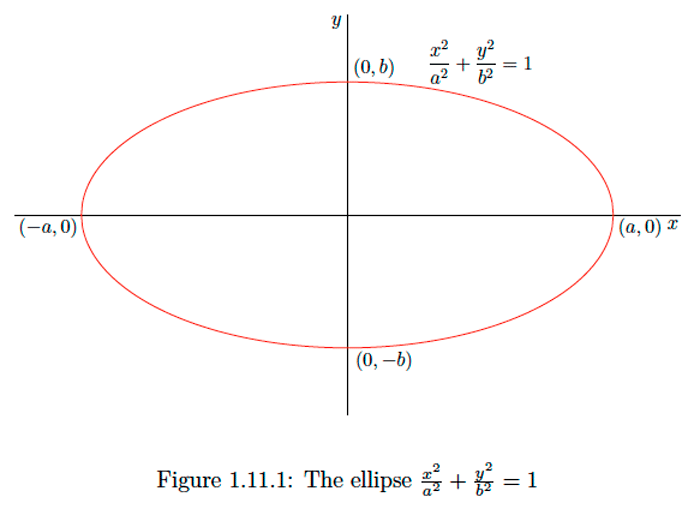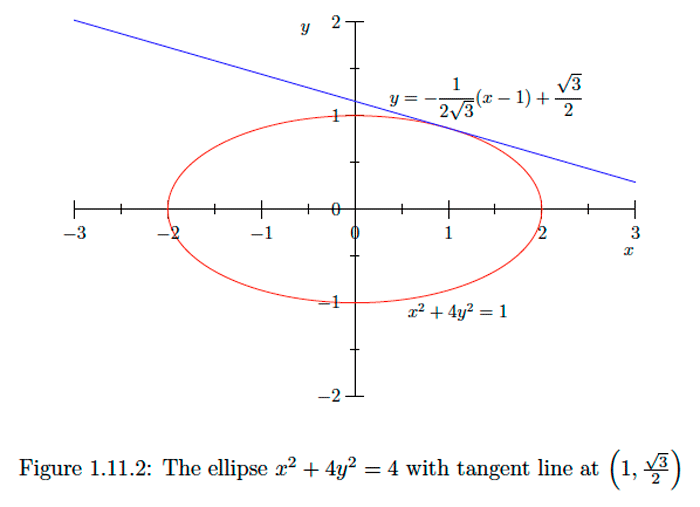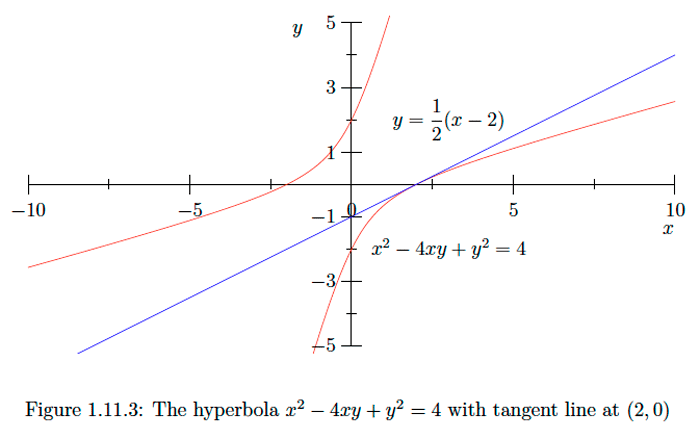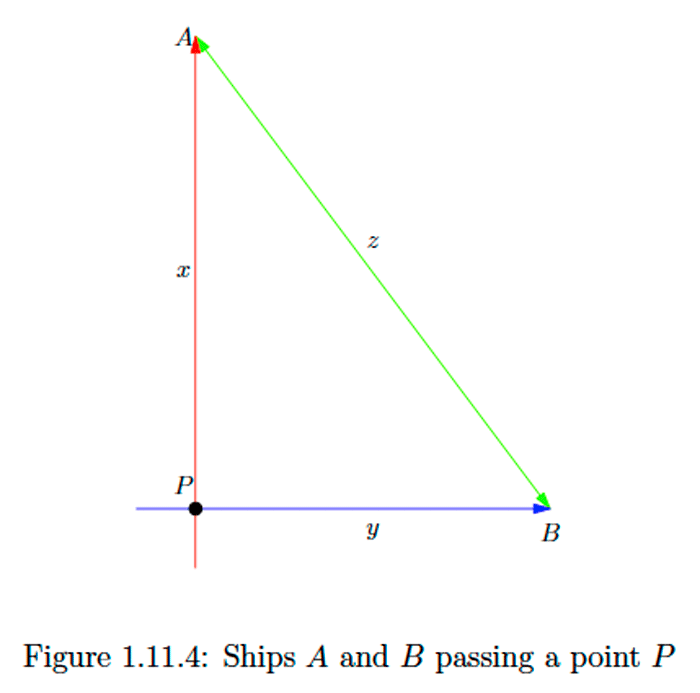1.11: Implicit Differentiation and Rates of Change
( \newcommand{\kernel}{\mathrm{null}\,}\)
Many curves of interest are not the graphs of functions. For example, for constants a>0 and b>0, the equation
x2a2+y2b2=1
Example 1.11.1
Using a=2 and b=1,(1.11.1) becomes, after multiplying both sides of the equation by 4,
x2+4y2=4.
Example 1.11.2
Consider the hyperbola H with equation
x2−4xy+y2=4.
Exercise 1.11.1
Find dydx if y2+8xy−x2=10.
- Answer
-
dydx=x−4y4x+y
Exercise 1.11.2
Find dydx|(x,y)=(2,−1) if x2y+3xy−12y=2.
- Answer
-
dydx|(x,y)=(2,−1)=−72
Exercise 1.11.3
Find the equation of the line tangent to the circle with equation x2+y2=25 at the point (3,4).
- Answer
-
y=−34(x−3)+4
Exercise 1.11.4
Find the equation of the line tangent to the ellipse with equation x2+xy+y2=19 at the point (2,3).
- Answer
-
y=−78(x−2)+3
The technique described above, known as implicit differentiation, is also useful in finding rates of change for variables related by an equation. The next examples illustrate this idea, with the first being similar to examples we saw earlier while discussing the chain rule.
Example 1.11.3
Suppose oil is being poured onto the surface of a calm body of water. As the oil spreads out, it forms a right circular cylinder whose volume is
V=πr2h,
Example 1.11.4
Suppose ship A, headed due north at 20 miles per hour, and ship B, headed due east at 30 miles per hour, both pass through the same point P in the ocean, ship A at noon and ship B two hours later (see Figure 1.11.4) If we let x denote the distance from A to P t hours after noon, y denote the
distance from B to P t hours after noon, and z denote the distance from A to B t hours after noon, then, by the Pythagorean theorem, z2=x2+y2.Exercise 1.11.5
Suppose the volume of a cube is growing at a rate of 150 cubic centimeters per second. Find the rate at which the length of a side of the cube is growing when each side of the cube is 10 centimeters.
- Answer
-
12cm/sec
Exercise 1.11.6
A plane flies over a point P on the surface of the earth at a height of 4 miles. Find the rate of change of the distance between P and the plane one minute later if the plane is traveling at 300 miles per hour.
- Answer
-
234.26 miles / hour
Exercise 1.11.7
Suppose the length of a rectangle is growing at a rate of 2 centimeters per second and its width is growing at a rate of 4 centimeters per second. Find the rate of change of the area of the rectangle when the length is 10 centimeters and the width is 12 centimeters.
- Answer
-
64cm2/sec


